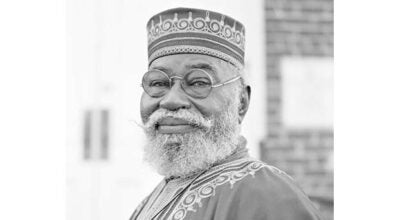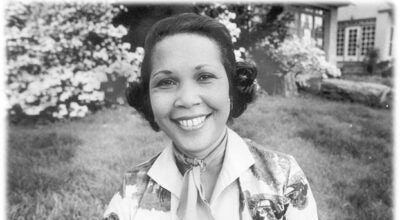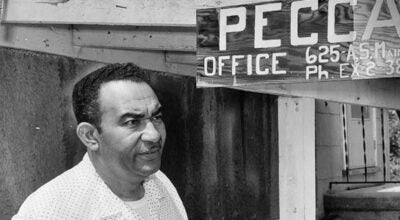‘It’s their vision’: Impact of Brown v. Board of Education continues
Published 4:54 pm Sunday, April 21, 2024
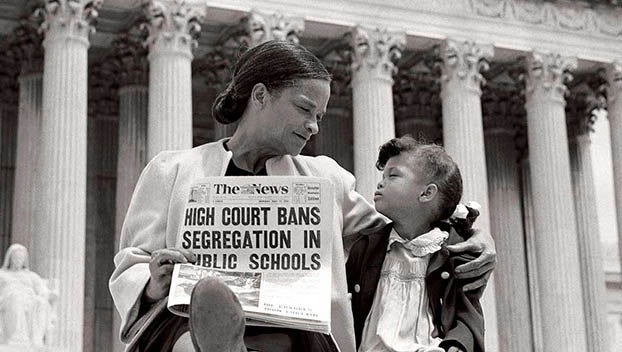
- A woman and her daughter hold up the newspaper proclaiming the ruling by the U.S. Supreme Court.
|
Getting your Trinity Audio player ready...
|
“When day is done, greet the dawn and not the setting sun.” That was the favorite quote of Oliver Hill. Instead of focusing on what’s behind us, we need to look forward, Hill argued. And he fought for that belief, as the attorney taking on the case of Barbara Rose Johns and the other students of the Moton School. He might not have realized it at the time, but Hill’s decision to take that case led to a critical point in U.S. history, one known as Brown v. Board of Education.
What started as Davis v. County School Board of Prince Edward County soon grew. The case eventually went to federal court and merged with a number of others out of South Carolina, Delaware, Washington D.C. and Topeka, Kansas. Those five cases combined to form Brown v. Board of Education, using the name of Oliver Brown, who was a plaintiff in the Kansas case. But while we all may have heard the words “Brown v. Board,” what exactly did that court case do? What changed as a result? It has been 70 years since the U.S. Supreme Court issued their landmark ruling in the case. Here’s a look at what happened.
THE RULING
In Brown v. Board of Education, the Supreme Court determined U.S. state laws establishing racial segregation in public schools were unconstitutional, irrespective of if the segregated schools were otherwise equal in quality. The Court’s unanimous decision overturned the “separate but equal doctrine” and was a major victory in the Civil Rights movement, paving the way for integration.
The case of Brown v. Board of Education was heard before the Supreme Court as five combined cases, as we mentioned before, and argued on behalf of the plaintiffs by a team of esteemed attorneys at the Legal Defense Fund (LDF), aided by some of the country’s most reputable legal scholars. The group was spearheaded by Civil Rights leader and future first African- American Supreme Court justice Thurgood Marshall.
The Court ruled the “separate but equal” doctrine set forth by Plessy v. Ferguson in 1896 violated the Equal Protection Clause of the Fourteenth Amendment of the U.S. Constitution and was therefore unconstitutional. In its ruling, the Court stated separating children from others in their age group or of similar qualifications creates a feeling of inferiority and causes harm to the child that likely cannot be undone.
Striking down segregation in the nation’s public schools became a catalyst for the Civil Rights movement. Brown led to substantial progress in desegregating housing, public accommodations, and higher education for decades to come.
“That the venue for this momentous decision to end the injustice of legal segregation took place in our public school systems is not an accident,” said Chris Ford, spokesperson for the Legal Defense Fund (LDF). “Ensuring the right to an equal education is fundamentally necessary to knowing that all people receive the knowledge, skills, and resources to lead fulfilling lives.”
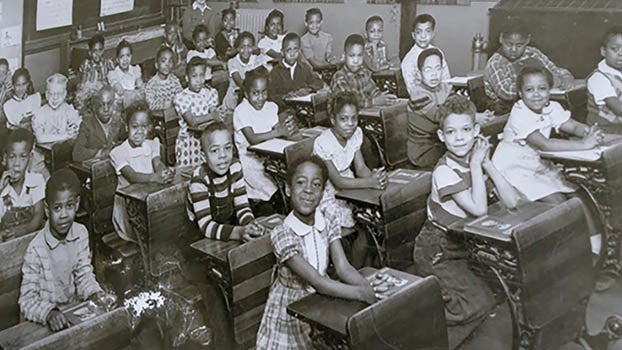
PHOTO BY NATIONAL PARK SERVICE
AS IMPORTANT TODAY AS IT WAS THEN
Even now, 70 years on, the Brown v. Board of Education ruling is critical, Ford pointed out, as we see “concerted threats to undermine this crucial pillar upholding our democracy.”
He pointed to things like anti-DEI (diversity, equity and inclusion) rulings, which require bathrooms for people based on their biological sex. He pointed to anti-LGBTQ laws, book bans and bans on affirmative action.
“(This) shows you how significant the Brown decision remains to preventing us from falling backwards into a less equal society,” Ford said.
Brown v. Board of Education did more than ban segregation on the basis of race. It also prohibited any segregation on the basis of disability. This paved the way for a few other rulings you may have heard of, such as the Americans with Disabilities Act and the Education for All Handicapped Children Act. Both of those don’t happen, ACLU and LDF officials say, without the steps first taken by Oliver Hill.
Their argument was a pretty clear one: The Fourteenth Amendment to the Constitution guarantees equal protection of the laws, and racial segregation violates that principle. That’s it, end of story. No exclusions, no what ifs. Everyone is entitled to equal protection of the laws. The lawyers brought in expert witnesses to prove what most of us take for granted today, that state-enforced racial segregation in education “deprives (Black children) of equal status in the school community…destroys their self-respect, denies them full opportunity for democratic social development (and)…stamps (them) with a badge of inferiority,” the case states.
STARTING FROM A SCHOOL PROTEST
Of the five combined cases heard as part of Brown, the only case originating from a student protest was Davis v. County School Board of Prince Edward County.
Davis originated from a protest organized by 16-year-old student Barbara Rose Johns who was educated in a segregated school in Prince Edward County where she went to R.R. Moton High School. Barbara Rose Johns and other R.R. Moton High School students in Farmville attended classes in an overcrowded schoolhouse with leaky ceilings and freezing winter conditions.
Parents and students pressured the school board about the unequal conditions but action was not taken. Dissatisfied with the school board’s inaction, Johns organized the protest with several classmates.
“Young people are always a driving force in social movements: it’s their vision that often illuminates the pathways that lead towards a brighter future,” Chris Ford explained. “Johns’s initiative in Prince Edward County propelled the efforts to end segregation in public schools forward: of the consolidated Brown cases, Davis v. County School Board was the only case that was student-led and made up a majority of the plaintiffs, proving that Johns’s efforts were significant and worthy of recognition.”
As the leader of the only student protest heard as part of Brown, Barbara Johns in fact remains a seminal figure in the early years of the Civil Rights movement. In 2018, the Virginia state legislature made April 23 Barbara Johns Day in Virginia to honor and recognize the Prince Edward County local’s contributions.
“Johns’ actions reverberate throughout the Commonwealth and the nation to this day,” American Civil Liberties Union of Virginia Chief Programs Officer Amy Woolard added.
Both Woolard and Ford emphasized that while Brown and the many advances made possible by the Civil Rights movement are momentous, there remains significant work to be done. The members of the human rights advocacy groups stressed that participating in the democratic process is of the utmost importance in continuing the fight for equality.
“After all,” said Woolard. “Brown v. Board might not have happened without community activists and lawyers who fought for years for meaningful government action to push desegregation efforts forward.
Editor’s note: Nate Pentecost wrote this story for Farmville the Magazine.


